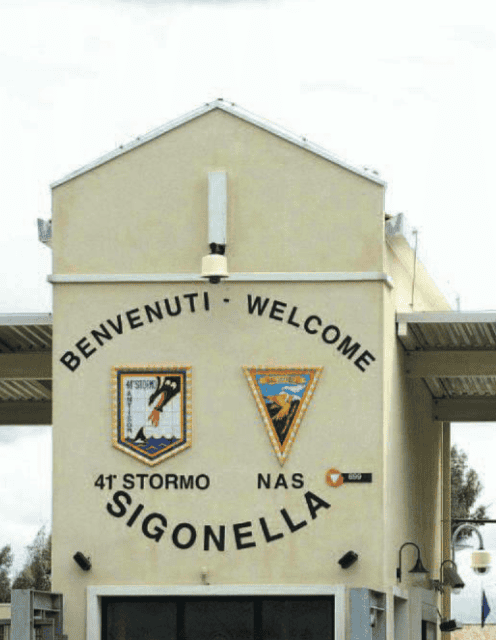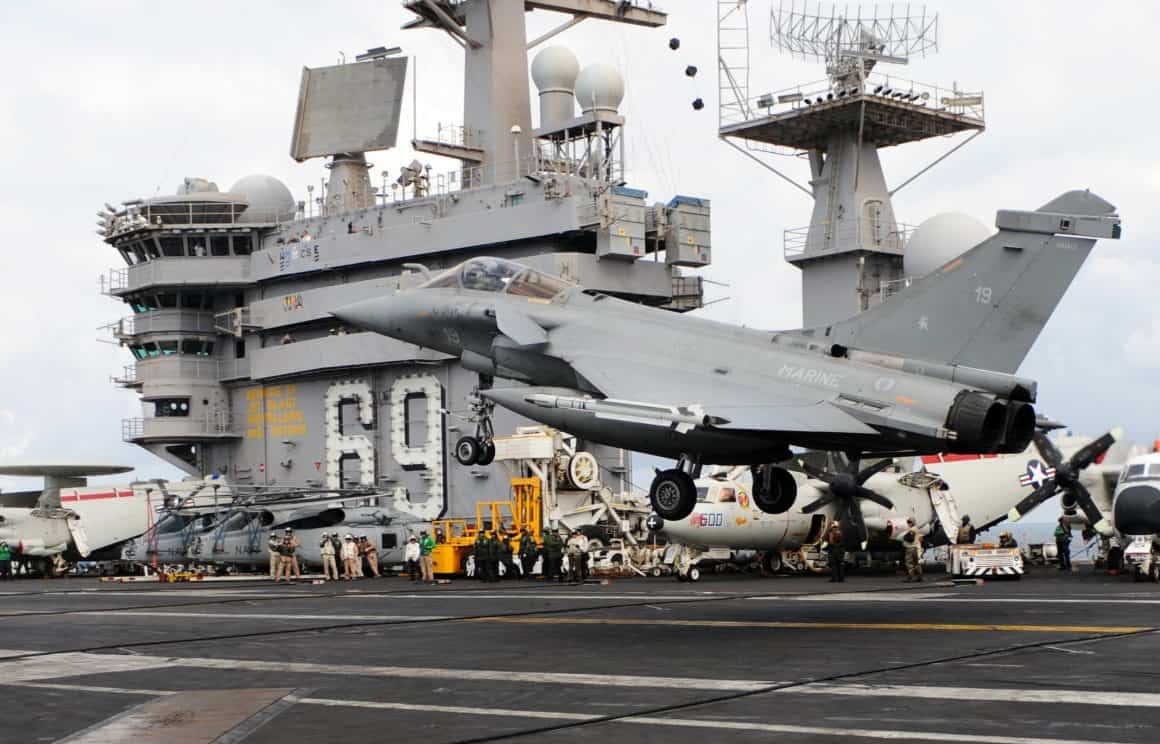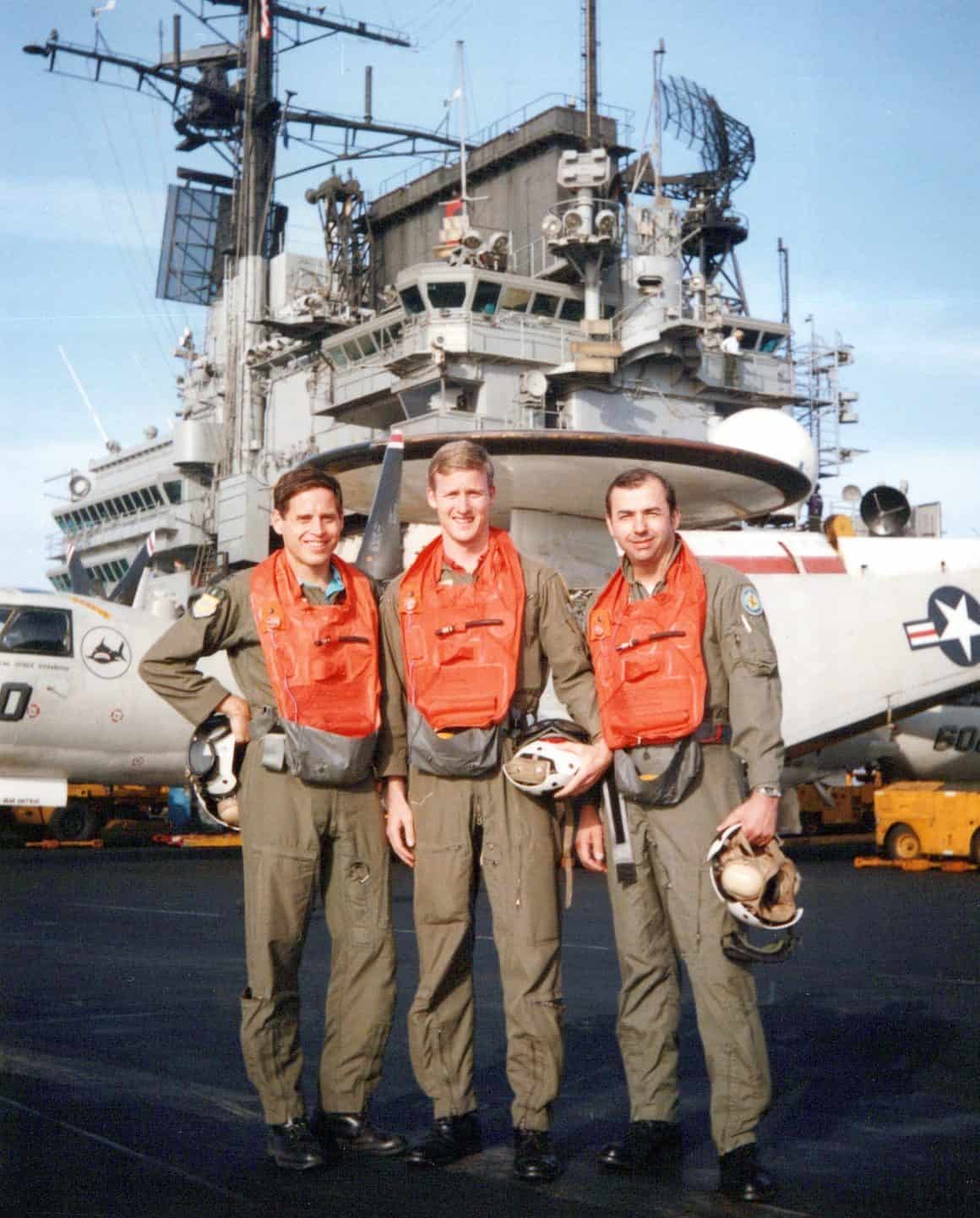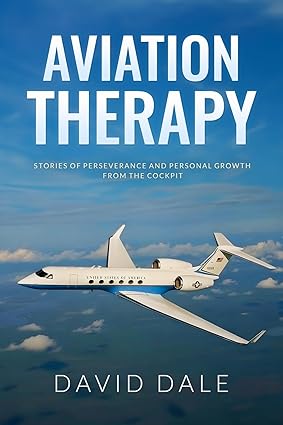In March of 1990, my KC-10 crew was tasked to support a naval exercise over the Mediterranean Sea.
The USS Eisenhower was in the eastern Med and about to be relieved by the USS Forrestal, entering the Med from the west. Whenever the Navy had two aircraft carriers in the Mediterranean Sea, they would simulate a war game against each other. Our KC-10 was temporarily based out of Naval Air Station (NAS) Sigonella, at the sole of the boot, near Catania, Italy.

I was a new copilot, flying one of my first overseas trips with my assigned aircraft commander, Jeff McAllister, flight engineer Reagan Moon, and boom operator, Russ. We’d provide refueling support to all takers, not favoring one ship over the other.
After our first day of the exercise refueling Navy F-14 Tomcats, F-18 Hornets, and EA-6B electronic jamming Prowlers, we received permission for an aircraft carrier fly-by. Everyone remembers the Top Gun scene where Tom Cruise zoomed past the carrier in his super-fast F-14, spilling the coffee of the officer on deck. Ours was nothing like that, let’s just say.
We dialed up the Eisenhower’s TACAN radio navigation beam to guide us to the ship and set up for the approach as if it were a runway. Once at 200 feet above the water, Jeff offset from the ship’s centerline and flew along the port, or left side, of the ship. We then executed a low approach, retracting our landing gear and flaps, and flew back around the carrier for a “high-speed” pass at 250 knots (290 mph). Our little airshow completed, we headed back to Sigonella for the day.
Grounded KC-10, Lucky Break: Hitching a Ride on a C-2 Greyhound

Although our fairly new KC-10 was pretty reliable, this particular aircraft had a maintenance issue on Day 2 of the exercise. A vital piece of equipment for our electrical system, called the transformer rectifier, stopped working, and the plane was grounded until that part could be replaced.
Our KC-10 was parked on the Navy ramp near several C-2 Carrier Onboard Delivery (COD) aircraft, which were twin-turboprop small airplanes used to ferry men and equipment out to the aircraft carriers. I jokingly asked my AC, Jeff, if we could get a ride on the C-2. We figured it didn’t hurt to ask. Walking into the small squadron building, we found a Navy O-3 lieutenant behind the scheduling desk. I strolled up and said, “Hi. We are with the KC-10 sitting out there, but it’s broken today. What’s it take to get a flight on a C-2?”
He looked down at his pad of paper and, without any hesitation, said, “I have one leaving at 1500 (3:00 p.m.) for the Eisenhower. Wanna go? I can add you all to the flight manifest.”
“Sure!” we answered with a smile. Jeff and I headed back outside to tell our flight engineer, Reagan, and boom operator, Russ, that we had arranged for us all to fly out to the USS Eisenhower.
The C-2 crew gave us our protective headgear and inflatable life vests and showed us to the aft-facing seats in the cargo hold of the small plane. The four of us couldn’t believe our luck as we took off and headed for the same aircraft carrier we had just flown by the day before.
Life Aboard the USS Eisenhower

The C-2 had very few windows, and they were tiny at that, so knowing where we were in relation to the carrier was difficult. The plane entered the arrival pattern for landing aircraft and made a series of hard 90-degree turns, throwing us from side to side, until we finally lined up on final approach. The trap landing was very sudden, and the quick deceleration after catching the cable felt like the end of a roller coaster ride when the coaster car comes screeching back into the station. It was all very abrupt.
We deplaned and looked around the massive carrier as men in their khaki naval uniforms looked down at us from the Crow’s Nest high above the flight deck. One of the men was a Chief Petty Officer who volunteered to take us on an impromptu tour of his big ship.
We strolled through the narrow hallways, crouching low to avoid banging our heads on various gray doors, up and down numerous staircases, and into the flight rooms of the Naval flying squadrons assigned to the ship for that sea tour. I gave my day-old copy of the Stars and Stripes military newspaper to a Naval aviator, and he sarcastically remarked, “Oh yeah. Y’all get to ‘Go Navy’ for all of one day!”

Our single day was much easier to enjoy than his six months at sea.
Eventually our tour ended up in the Flight Operations Center, where we got to meet the Air Boss, a Navy O-6 captain in charge of the launch and recovery of the ship’s air fleet. He asked, “Were y’all the crew that flew by yesterday?”
“Yes, sir. That was us,” Jeff answered with a grin. “What did you think of it?”
He smiled back and remarked, “Well, that high-speed pass was nothing, since we have Tomcats. But the low-speed approach and go around was very impressive! Your tail engine was shooting up a rooster tail in the water. Now that was cool.”
Unknown to us, our KC-10 (DC-10-30) tail engine had created a giant spray in the ocean behind us.
The Air Boss then asked, “How long will y’all be onboard?”
Jeff replied, “We have to get back to Sigonella today to coordinate the repair of our KC-10.”
Due to the time zone difference, the maintenance personnel back at Barksdale AFB, Louisiana, were not even aware at this point that our jet was broken.
The Air Boss then remarked, “That’s too bad. If you stayed the night, I’d probably be able to get you a Tomcat (F-14) ride in the morning.”
We couldn’t believe that opportunity, but really had to get back to shore since our C-2 plane was preparing to depart. As we crossed the carrier’s flight deck, I told Jeff, “It would almost be worth the Article 15 (military punishment) to stay the night and get that flight!”
Cat Shots, Delays, and Italian Adventures

Pacific Ocean (May 18, 2005) – Topside Safety Petty Officer, Aviation BoatswainÕs Mate Jeffery Fournier, clears the launch area as he signals to the Catapult Officer that a C-2A Greyhound, assigned to the “Providers” of Fleet Logistics Squadron Three Zero (VRC 30), is ready for to be launched from the flight deck of USS Ronald Reagan (CVN 76). Reagan is currently underway in the Pacific Ocean conducting carrier qualifications for West Coast Fleet Replacement Squadrons. | IMAGE: U.S. Navy photo by Senior Chief Photographer’s Mate Mahlon K. Miller
(RELEASED)
We strapped into the back of the COD, and the enlisted crewmember briefed us on what to expect during the catapult launch, or “Cat Shot.” Because we were facing backwards, we needed to cross our arms across our chest and cross our feet at the ankles, then brace for the departure. Otherwise, the instant G-forces of the launch would make our arms and legs fly out uncontrollably in front of us.
We did as told and heard the two turboprop engines rev up to takeoff rpm. In a flash, the plane lurched forward, and we could feel the blood rushing to our cheeks and eyes as we strained to keep our arms and legs close to our bodies. Within seconds, the rapid acceleration ended, and we were airborne in what felt like a calm, floating sensation after that violent takeoff. I looked at my friends’ faces, and we were all bright red from the rush of blood created by the G-forces. Within an hour, we were back on terra firma, and Jeff placed a call back to Barksdale to explain our maintenance issue.
The good news for our crew was that the replacement part would be sent to us on a C-141 cargo plane leaving the States and flying a routine resupply mission throughout the Mediterranean region. This meant our broken KC-10 would remain on the ground for another four days. Enough time to tour southern Italy and go on another C-2 flight!
The four of us toured Palermo and walked on Roman ruins, then enjoyed authentic Italian pasta and pizza with glasses of red wine each evening. Quite a cultural and worldly experience for guys in their late twenties. Days later, we headed back to the C-2 squadron and scheduled another flight, but this time to the older USS Forrestal. The landing and tour were very much like the first event on the Ike, but I wanted to experiment on the next catapult takeoff. I purposely relaxed my arms and legs, resting my hands on my knees.
As the C-2 shot forward with me facing the back of the plane, my arms and legs involuntarily flew out in front of me, parallel to the floor. With all my strength, I could not bring them back close to my body until the rapid acceleration subsided. We all looked at each other again, red-faced and laughing like kids at a carnival.

New Release Alert! This October, bestselling author David Dale invites you to take flight on an inspiring journey of personal growth, resilience, and adventure—perfect for aspiring pilots, military history buffs, and anyone seeking a story of perseverance and triumph! Aviation Therapy is a deeply personal aviation memoir—an intersection of extraordinary world events and one man’s transformation through flight. Packed with gripping firsthand accounts and invaluable life lessons, Aviation Therapy is “Chicken Soup for the Skies”—a testament to how aviation can shape character, build confidence, and inspire a sense of purpose.
Pre-order now on Amazon and be among the first to experience Aviation Therapy—available 21 October 2025.

